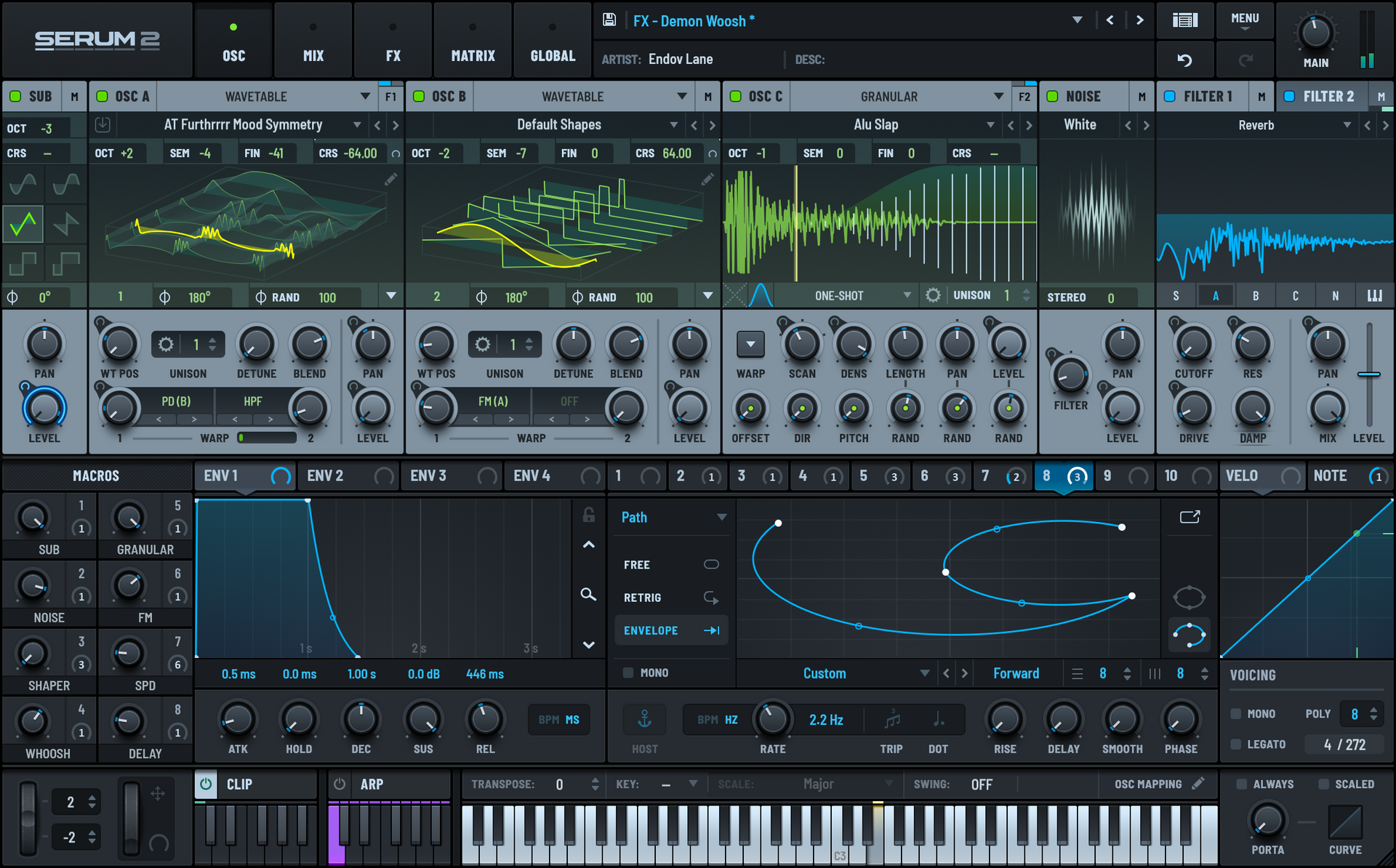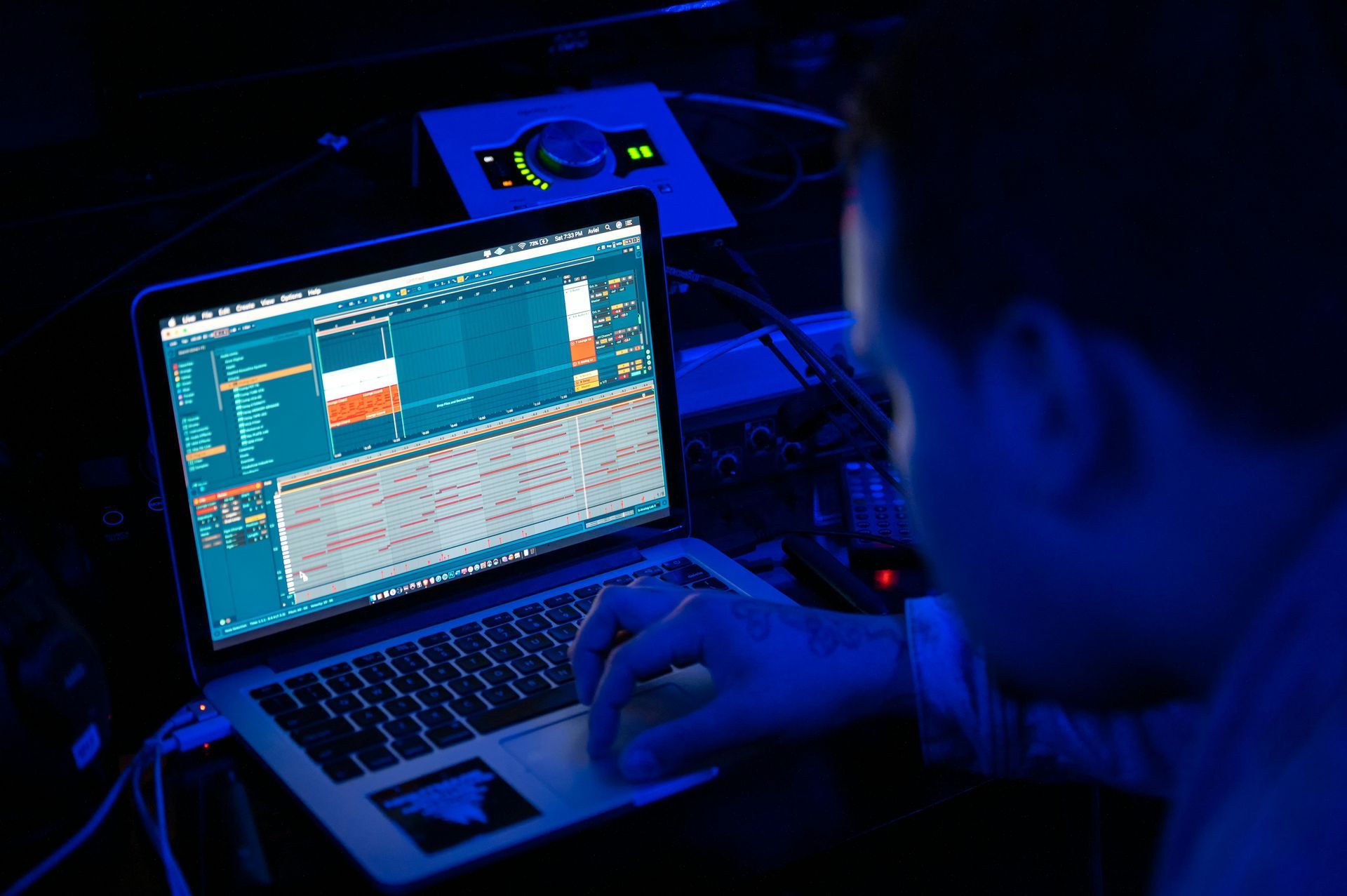What Is a Bridge in a Song and How to Use It
Learn how to write the bridge in a song. This guide explains what is a bridge in music and offers ten tips on how to add one to your song.

What Is a Bridge in a Song?
The bridge is a musical passage that connects two sections of a song. For example, a bridge often connects the verse to the chorus of a song, introducing a different chord progression to add variety. It can also sit between the last two chorus sections to add variation. Think of it as a transitional section.
Bridges in songs are essential not just for writing EDM and pop hits as they introduce a fresh musical and lyrical element that enhances the song’s structure. For example, they add contrast from the repetitive verse and chorus sections by providing new musical and lyrical elements. Adding musical variation makes a song more exciting and keeps it from feeling too repetitive. It’s a great way to grab the attention of people listening to your song!
THE IMPORTANCE OF BRIDGES IN SONG STRUCTURE
A bridge is a crucial element in song structure, serving as a transitional section that connects two parts of a song. It provides a break from the repetition of the verse and chorus, adding contrast and variety to the song. The bridge can introduce a new chord progression, instrumentation, rhythm, feel, tempo, or even a change in key or time signature, making it a key element in creating a sense of surprise and interest in a song.
Typically placed in the second half of a song, after the second chorus, the bridge is usually 4-8 bars long. This section can add depth and emotion to a song, creating a sense of tension and release. A well-crafted bridge can elevate a song from good to great, making it more engaging and memorable for listeners.
In popular music, the bridge often adds a new perspective or twist to the song’s story, or introduces a new musical idea. It can be a powerful tool for songwriters, allowing them to add complexity and interest to their songs. By incorporating a bridge into their song structure, songwriters can create a more dynamic and engaging listening experience for their audience.
How Long Should a Bridge Be in a Song?
The typical length of a song bridge is 4 or eight bars. A bridge is also known as the “middle 8” because this section usually occurs in the middle of songs for 8 bars. However, the duration depends on your songwriting needs.
Moreover, a bridge is often the only part of the song that plays once. Having it play once maximizes its impact and effect. However, there are no hard rules!
Why Use a Bridge in a Song Structure
The bridge of a song has several purposes. Also, various genres use them in different ways to enhance the listening experience. For example, bridges can improve your song by:
- Adding variety and variation
- Creating tension and release
- Building energy and anticipation
- Creating a dynamic shift in the song
- Introducing new instruments or lyrics
- Providing contrast to the rest of the song
- Shifting the emotional impact of the song
- Breaking up repetitive sections of the song
- Taking the song or lyrics in a new direction
- Providing a new perspective or closure to the song
- Transitioning two parts of a song to capture the listener’s attention
Additionally, a bridge can lead into a guitar solo, adding a new layer of excitement and variation to the song.
An effective bridge adds the essential contrast that keeps your song from feeling repetitive. It’s both pleasurable and makes the return to the next section more exciting.
USING A BRIDGE TO ENHANCE YOUR SONG
Using a bridge in your song can be a great way to enhance its structure and add interest. Here are some tips for using a bridge effectively:
- Introduce a New Chord Progression or Melody: This can add contrast and variety to your song, creating a sense of surprise. A new chord progression can shift the mood and keep the listener engaged.
- Experiment with Different Instrumentation or Rhythms: Adding new instruments or changing the rhythm in the bridge can add texture and interest to your song. This creates a sense of tension and release, making the final chorus more impactful.
- Add a New Perspective or Twist to Your Song’s Story: Use the bridge to introduce a new lyrical idea or a different angle on the song’s theme. This can add depth and emotion, making the song more relatable and memorable.
- Keep Your Bridge Concise and Focused: A good bridge should be 4-8 bars long and have a clear musical or lyrical idea. Avoid overcomplicating it; simplicity can often be more effective.
- Create a Sense of Tension and Release: Introduce a new musical idea in the bridge and resolve it in the final chorus. This dynamic shift can make the return to the chorus more satisfying for the listener.
By using a bridge effectively, you can add complexity and interest to your song, creating a more dynamic and engaging listening experience for your audience. Remember to experiment and have fun with your bridge, and don’t be afraid to try new things.
10 Ways to Write an Amazing Bridge of a Song?

There are several ways to write a great bridge for a song. Use the bridge to creatively take your song in a slightly new direction before returning to either a repeat of the chorus or a new verse.
When writing a bridge, consider how it will interact with the chorus lyrics, providing a contrast that enhances the emotional impact of the song.
When done well, a bridge provides a pleasant sense of contrast from the rest of the song. It might also be the missing ingredient that completes your song!
However, not every song needs a bridge. It’s essential to have a purpose for the bridge. Otherwise, a randomly placed bridge may not add value to the song. Also, there are no hard rules for writing a bridge, so experiment.
Here are ten tips to consider when writing a bridge of a song:
1. Find a Bridge Placement That Works for Your Song
Start by identifying the different parts of your song. For example, the intro, verse, breakdown, chorus, outro, etc. Next, determine where the bridge fits within the context of your song.
A familiar song structure for pop music today is ABABCB. The format of this song structure is Verse-Chorus-Verse-Chorus-Bridge-Chorus. With this song form, the bridge breaks up the monotony of repeating the chorus twice.
However, experiment with different bridge placements based on your songwriting needs.
2. Write a New Chord Progression That Changes Key
Try writing a new chord progression that differs from the other parts of the song. Switching the chord progression adds contrast and creates a different mood or feeling.
For example, songs in a major key will often switch to minor chords in the bridge and vice versa. This move also presents the opportunity to write different lyrics for the bridge.
However, ensure the chord progression transitions smoothly without sounding disoriented. Jarring transitions between sections of a song are unpleasant.
3. Write a New Melody That’s Different from the Verse and Chorus
Writing a new melody for the bridge takes the song in another direction before returning to a repetitive chorus or verse. This dynamic shift creates variety and contrast. You could also use the new melody as a musical interlude.
Write a melody that differs in shape and feel from the verse and chorus melody. A common approach is to pitch the melody higher in the bridge to evoke an emotional response.
However, ensure the melody fits the new chord progression and flows seamlessly into the next section.
4. Introduce New Lyrics to Reinforce Your Lyrical Idea
The bridge offers an opportunity to introduce a new lyrical idea or add a twist to the song's story. It also gives you a chance to deepen the emotional impact of your lyrics.
Use bridge lyrics to present a different perspective, overall understanding, or closure to the song. For example, tell your story from another angle or give clarity to the point you’re trying to convey. You can also use the bridge to express an emotion that may not work tonally in the other sections.
In addition, try singing in a different vocal range for your bridge. Singing an octave higher or lower than the rest of your song adds a surprising new layer. The contrast may give your audience something catchy to latch onto and remember because it sticks out in the song.
5. Introduce New Instruments or an Instrument Solo
Many artists use the bridge to feature an instrument solo or to introduce a new instrumental passage.
A good example of this is when artists introduce a guitar solo in the bridge to add a new layer of excitement.
For example, if the song’s primary instrument is a piano, try adding a guitar in the bridge instead. This move provides a welcoming contrast that may surprise the listener.
You could also use the new instrumentation to build tension towards the final chorus. Or, continue the new instrument into the chorus to add another layer and a sense of heightened energy.
Again, experiment with different variations. You could even use the solo melody as a musical interlude
6. Change the Rhythm of Your Drum Pattern
Try using a song bridge to switch your drum rhythm pattern temporarily. Use it as a transitional section.
For example, if your song has a four-on-the-floor rhythm, switch to a half-time beat pattern for the bridge. This move adds contrast, variation, and a change in energy.
It also adds tension that releases once the 4/4 beat kicks back in, giving the chorus more impact. It’s a sure way to surprise the listener and build anticipation before transitioning to the next section.
7. Change the Musical Key to Shift Emotional Responses
Sometimes artists will modulate to a different key for the bridge. Key changes can produce various emotional effects on the listener.
For example, raising or lowering the energy level, brightening or darkening the mood, or creating a sense of unease. It’s a sure way to keep the listener interested in hearing more of the song.
However, switching keys can be tricky. Ensure the key change is smooth and makes sense within the context of the song. Avoid confusing the listener with a jarring key change.
One of the most natural key changes is modulating to the relative minor or major key. Relative keys share the same notes. For example, C major is the relative key of A minor.
After changing the key, you can switch back to the original key at the transition or stay in the new key for the rest of the song. Try different variations!
8. Change the Tempo to Shift Energy Levels
Changing the tempo or time signature is another way to add contrast, variation, and change to energy levels.
However, this move can be tricky. It can also confuse the listener if they’re flowing with the groove. Use this option with caution, and make sure the tempo transitions back to the original rhythm seamlessly.
9. Change the Dynamic Range to Create Pleasing Contrast
Dynamic range is the difference between the loudest and quietest parts of a song. Changing your song’s dynamic range in the bridge could add pleasing contrast.
For example, if your song is busy and packed with repetitious energy, consider releasing that energy in the bridge. This move gives the listener a chance to reset before returning to an explosive chorus. Again, variety will keep the listener engaged with your song.
You can release energy by removing drums and instruments. For example, strip the song down to only a vocal and a backing instrument.
You can also use the bridge to build energy. This move prepares the listener for the climax in the final chorus.
10. Keep It Simple and Don’t Overthink the Bridge
Sometimes the most effective moves are the simplest ones. Think about the phrase “Keep it simple stupid” or K.I.S.S. Avoid going overboard with the changes in the bridge.
A good bridge strengthens the overall song, not change it completely.
Examples of Great Bridges in a Song
Here are two excellent examples of effective bridge sections by Flume and The Beach Boys:
As mentioned earlier, a well-crafted bridge can elevate a song from good to great.
Flume – Never Be Like You feat. Kai
Flume has a beautiful bridge section. It starts at minute 2:15 and sits between the last two chorus sections. Kai’s vocal hook changes lyrically, melodically, and rhythmically.
Also, Flume brings in a slightly different pad progression that’s more present. He then introduces a set of string chords, adding tension that builds into the final chorus.
The Beach Boys – Good Vibration
This bridge is an excellent example of how to break the rules. First, there are two bride sections. The first bridge starts at minute 1:40, and the second begins at 2:14. The second bridge then extends to minute 2:56 before the last chorus section. This is a long bridge section!
Both sections dramatically shift the tone, energy, and mood of the song. First, the vocals change lyrically, melodically, and rhythmically. Second, they feature different drum rhythms, drum sounds, and new instruments.
The Beach Boys also did an excellent job creating plenty of tension before returning to the chorus. They broke the rules while still driving the song back to a happy final chorus.
Conclusion
What is a bridge in music? The bridge section provides a temporary detour for your listeners. It’s an effective way of adding contrast, variation, energy, and enhanced emotion to your music.
However, not all songs need a bridge. Don’t think your song is incomplete without one and avoid trying to force it. Only consider writing a bridge if it fits the song, makes sense to the listener, and adds value to the song.



